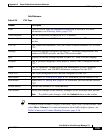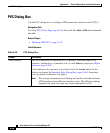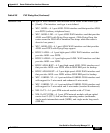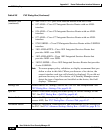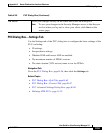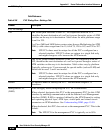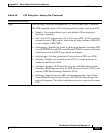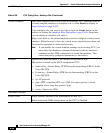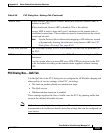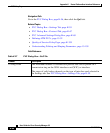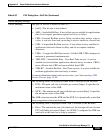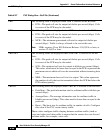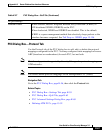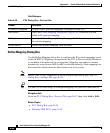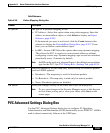
K-63
User Guide for Cisco Security Manager 3.2
OL-16066-01
Appendix K Router Platform User Interface Reference
PVC Policy Page
PVC Dialog Box—QoS Tab
Use the QoS tab of the PVC dialog box to configure the ATM traffic shaping and
other quality-of-service settings of the PVC, including:
• The limit on packets placed on transmission rings.
• The QoS service.
• Whether random detection is enabled.
These settings regulate the flow of traffic over the PVC by queuing traffic that
exceeds the defined allowable bit rates.
Note QoS values are highly hardware dependent. Please refer to your router
documentation for additional details about the settings that can be configured on
your device.
Inverse ARP When selected, the Inverse Address Resolution Protocol (Inverse ARP) is
enabled on the PVC.
When deselected, Inverse ARP is disabled. This is the default.
Inverse ARP is used to learn the Layer 3 addresses at the remote ends of
established connections. These addresses must be learned before the virtual
circuit can be used.
Note Use the Protocol tab to define static mappings of IP addresses instead
of dynamically learning the addresses using Inverse ARP. See PVC
Dialog Box—Protocol Tab, page K-67.
PPPoE Max Sessions The maximum number of PPP over Ethernet sessions that are permitted on
the PVC.
VPN Service Name The static domain name to use on this PVC. The maximum length is 128
characters.
Use this option when you want PPP over ATM (PPPoA) sessions in the PVC
to be forwarded according to the domain name supplied, without starting
PPP.
Table K-26 PVC Dialog Box—Settings Tab (Continued)



